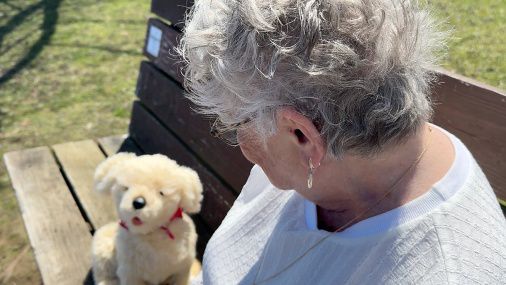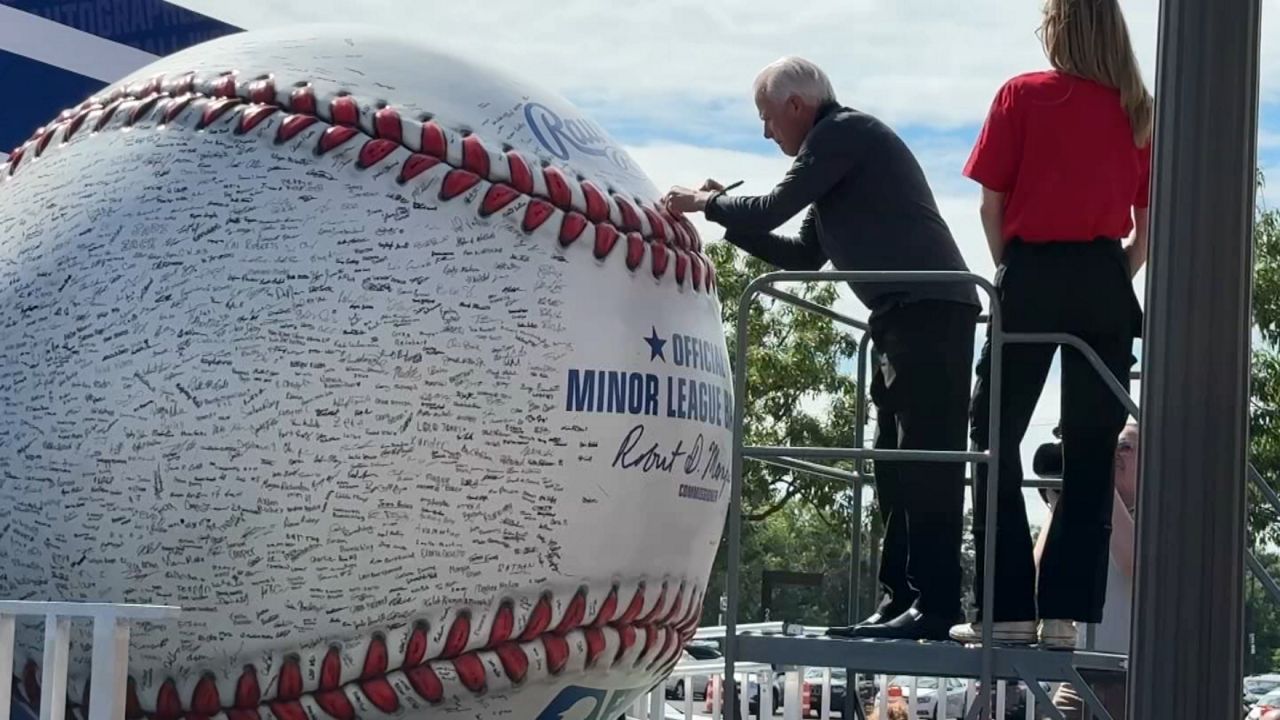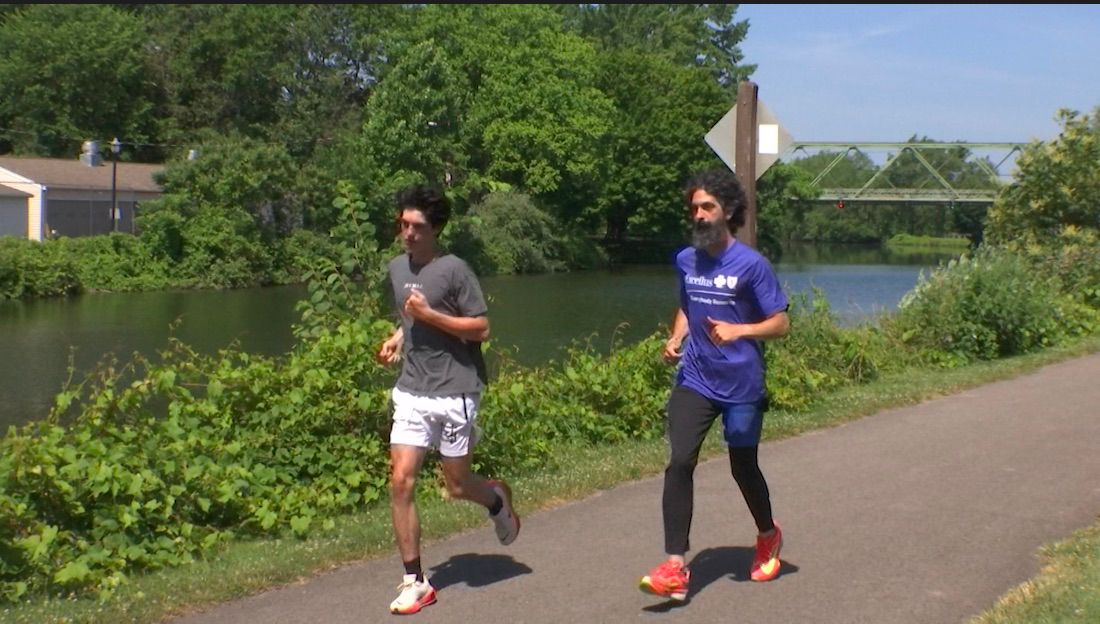ROCHESTER, N.Y. — The city of Rochester has begun planning efforts to fill in the northeast stretch of its Inner Loop expressway and redevelop nearly one-and-a-half miles of space to reconnect downtown to some of its most at-risk neighborhoods.
It’s a highway one city of Rochester spokesman said was built “to move white people who come downtown away from Black people.” That sentiment fuels efforts to remake the northern section of the city’s Inner Loop expressway and bring equity to neighborhoods that leaders say were wronged by the highway’s construction three generations ago.
It could take at least 10 years to fill in the rest of the Loop. The project’s master plan has been adopted, but what goes along and beyond the planned Central Boulevard created in its place still fuels debate.
Burtha Jones has been hearing and seeing the Inner Loop role by her Marketview Heights duplex for more than 50 years. How's she feel about her city filling it in?
"It's stupid. It's dumb,” said Jones, 87, who, when asked why, said it didn't make any sense to her.
Jones is a retired homeowner and landlord, and a retired end-of-life care nurse who shops for deals just as the nearby Public Market shuts down each Saturday. Some of the vegetables she snags for a bargain she shares in a vegetable stew stored in mason jars given to visitors of her Weld Street duplex.
Jones is not sure Inner Loop planners know what the people who live in Marketview Heights and the other neighborhoods to be linked by the Loop fill-in want.
"The ones [that are] doing it don't live over in here,” Jones said. “[They are] sitting downtown pushing a pencil."
Those pencils are already in the process of erasing Rochester's Inner Loop for good. About $4 million in federal funding has arrived to fuel this stage of the project’s planning.
Erick Frisch leads the project. Rochester’s deputy commissioner of Neighborhood and Business Development has a map of the preferred design as you enter his office. Frisch said the project will bring equity to neighborhoods severed by the expressway.
“We want to make sure that all outcomes are equitable, regardless of your racial or ethnic background, sexual orientation or any of the other determining factors that have so influenced outcomes historically," he said.
Frisch also is clear: Inner Loop North is not Inner Loop East — the phase-one initiative that rebuilt three-eights of a mile of the loop from behind the Strong National Museum of Play to just shy of University Avenue.
The three-eighths-of-a-mile project featured less direct neighborhood connection and more space to build mixed-use development along Union Street.
Phase one of the Inner Loop was a “proof of performance” project that showed how the raising of an urban highway can provide the opportunity for connecting neighborhoods. Phase two will seek to cover a mile and a half of the highway. That’s four times larger than the Inner Loop East project.
Parks, green space housing and other development advantageous for neighborhood commerce are being considered.
Frisch said the North project must satisfy the many more residents who will be closer to its transformation.
"We’ll do this by working with the community to achieve the outcomes that the community envisions,” Frisch said.
Expressway spurs have been redefined as part of the reason underserved urban neighborhoods decline. Built to carry commerce when they arose, they're now considered, like redlining, discriminatory public works from a time when leaders did not consider their impact.
But as Rochester’s Inner Loop gets filled in, citizens are wary that gentrification will follow this effort to make things right.
“Why not fill in vacant lots, and leave things open like it is?” Jones said.
Community input for what should rise is being funneled to the city through a group led by Inner Loop neighbor Suzanne Mayer. She runs Hinge Neighbors, a group she says helps move people beyond the status quo.
"I know, I'm an old white woman. Why would you talk to me?” Mayer said. “And it really has to be about sitting down and listening to people. I think a lot of it is to build trust."
Mayer lives in the Hinge Neighborhood, just north of Main Street and part of the eastern-most corner of the Inner Loop North project. The highway that runs just beyond her street will be filled in from its exit near Union and University to State Street. That includes the elimination of the elevated section of the Loop. It runs along the CSX rail line that takes passenger and freight lines in and out of downtown Rochester.
Leveling the western end of Inner Loop North will open High Falls district access to downtown. It will also create a path to a planned state park below and, beyond High Falls, all part of the ROC The Riverway initiative.
Activist and planner Shawn Dunwoody has been a bridge-builder on the Inner Loop projects. He brings Hinge neighbors the kind of cred his art carries along the Loop.
"We want to see a return to the neighborhood where you walk out the door, wave to a neighbor, shake a hand, enjoy a barbecue together,” Dunwoody said. “And we see that promise happening here.”
Rochester's phase one of expressway fill-in needed to be a clean win. A $21 million project was rebuilt near the southern core of downtown. A quarter-mile of multi-floor multi-use housing rose.
Jones, like others near the North neighborhood, wants to see the integrity of the neighborhood where she’s spent most of her life, maintained.
“Why don’t they fill in the vacant lots?” Jones said. “We need homes people can buy, not complexes that go from being expensive to low-cost housing. We’ve got plenty of that already.”
Mayer said most of the people who have attended hearings and neighborhood gatherings are in favor of what she called “filling in the mote."
“When you talk to neighbors, they say 'we really want the 16th Ward back,'" Mayer said.
As a project that’s four-times larger than phase one, Inner Loop North will need tens of millions of dollars to complete, according to Frisch. Final recommendations for how it is developed will be delivered by March 5.
“While we may never get back what we have lost with the construction of the expressway, we do aim to be consistent with what the residents have voiced to us in terms of what they want in the neighborhood,” said Frisch, who added that the first reconnected sections of the Inner Loop North project could be five or more years away.
Citizens there are not the only ones watching closely. Cities across the country turning federal infrastructure funding into neighborhood reunion projects are learning by how Rochester fills in its expressway.
Buffalo is working toward tearing down its Route 33 expressway through the Queen City’s east side.
The expiring, elevated section of Interstate 81 that cuts off the northeast corner of Syracuse from the city’s university district and central core has also been targeted has proposed a street-level-to-neighborhood grid project.
Detroit, Michigan and Oakland, California are among the other cities collaborating with Rochester Inner Loop Project teams on best practices for raising highways to reimagine underserved neighborhoods.









